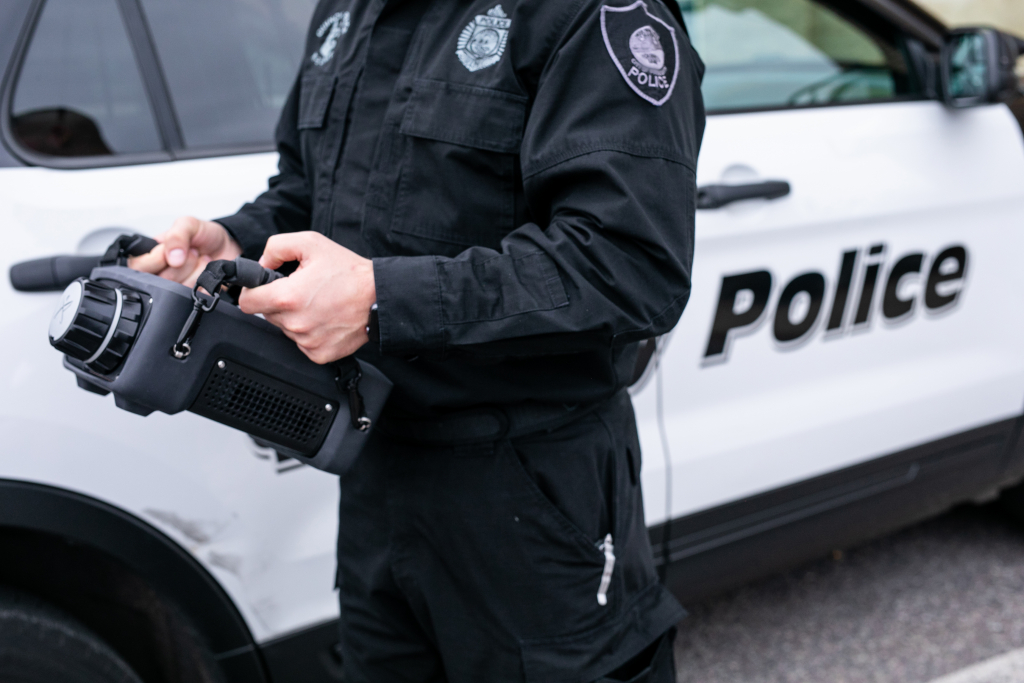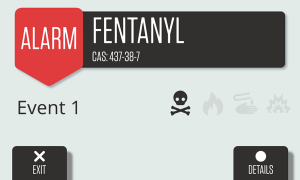Identifying chemicals precisely through trace analysis is now a reality, opening new doors for Customs officers
18 October 2023
By John Johnson, 908 DevicesCustoms administrations have a full array of tools and technologies at their disposal to test material and substances – both in the field and in their labs. These tools all have benefits and limitations. This article introduces an innovation which enables field officers to analyse trace materials left on any items and obtain the specific name of a trace level substance. Not only can they confirm or allay their suspicions rapidly, but they can also proceed to physical inspection with all the precautions needed.
Chemical analysis: the difference between lab and field tools
Mass spectrometry (MS) is the gold standard technology used by all forensic crime labs to analyse chemical substances. This technology provides Customs officers with everything they need: high molecular specificity, reproducibility, accuracy and sensitivity to low parts per billion (PPB). The limitations of this technology, in terms of getting it into the hands of Customs officers, are not insignificant. Traditional mass spectrometry instruments weigh 400 pounds, need an air-conditioned, humidity-controlled room and require a large supply of helium or other carrier gas. The outcome, due to these limitations, is that mass spectroscopy is relegated to the forensic lab. This left room for other, field-based technologies to fill the need for high-fidelity chemical analysis in the field.
This need was filled by two technologies: Ion Mobility Spectroscopy (IMS) and vibrational spectroscopy techniques such as Raman and FTIR. These two capabilities in a single portable system have been, to a large degree, mutually exclusive, with the technologies being separated by their degree of specificity and their level of detection.
IMS is most familiar to the air traveling community when airport security, such as the U.S. Transportation Security Administration (TSA), pulls travellers aside to check their bags for explosives using a trace explosives-detection device (TEDD). When airport security use a TEDD, they are looking for anything invisible to the human eye to determine whther a traveller has been in proximity to, or has recently handled, explosives. The adoption of IMS in the airport security sphere made it relatively easy for this technology to also be employed in other security arenas, such as Customs and borders. The primary limitation is that IMS does not have the ability to make an exact identification of a substance. Functionally, IMS cannot tell the difference between TNT and DNT (a precursor to TNT), as it classifies everything into families – in this case, explosives.
Vibrational spectroscopy systems are ubiquitous in the public safety space, but are relatively new tools for Customs officers. These are bulk identification technologies, which are very good at analysing a substance by creating a molecular fingerprint that can then be measured against tens of thousands of chemicals in a library of known chemicals. These technologies are commonly employed by law enforcement and hazardous materials response teams to identify puddles, spills and powders that are visible to the human eye, often in large (bulk) quantities. The response provided by these systems is extremely precise, even among closely-related chemicals like TNT and DNT, which are correctly differentiated by vibrational spectroscopy systems every time. The drawbacks of these technologies are twofold: first, they can only identify a substance that is visible to the human eye, and second, the high degree of specificity they provide is outstanding for pure substances, but challenging in the case of mixtures. The smaller the component within a mixture, the more likely it is that vibrational spectroscopy will fail to detect it. Once you get below 10%, it is extremely likely that only the major component will be identified, and any minor components will remain undetected. While there are situations where pure forms of drugs are found by Customs, it is generally the case that officers will encounter mixtures of compounds where controlled substances such as fentanyl, for example, are in the 1% to 3% range.
Mass spectrometry goes into the field
Mass spectrometry offers two distinct advantages in a single device, in that it has almost the specificity of FTIR and Raman, as well as the trace level analysis capabilities of the IMS systems. Getting it out of the lab and into the field has been made possible by the advent of high-pressure mass spectrometry (HPMS). HPMS leverages microscale geometries, high frequency electronics and high efficiency vacuum pumps, all leading to significant reductions in device size and power consumption. Today’s HPMS systems have been scaled down from 181 kg (400 lbs) to 3.6 kg (8 lbs), and run on rechargeable batteries. Microscale mass spectrometry offers trace detection and identification of chemicals at the point of need, in an easy-to-use handheld device. Regular software updates enable users to identify new substances, such as novel synthetic drugs. In addition, the devices are equipped with machine learning software that can identify more than 2,000 fentanyl analogues in addition to hundreds of other drugs, such as methamphetamines, xylazine and more.

Every bulk substance leaves a trace
Using a high performance, handheld mass spectrometry device enables Customs officers to deploy this technology right at the point of need; they can quickly and reliably detect materials and determine appropriate action by taking a simple swab. Take the New Zealand Customs Service, for example. Their officers recently positively identified narcotics concealed in containers of waterproofing materials using swabs taken from the handle of the bucket – where traces of narcotics were left behind by the people who packed the containers – and running them through a handheld mass spectrometer with trace analytics. Positive indications for methamphetamine hydrochloride were returned in seconds. For confirmation purposes, the process was replicated with non-suspect items (which returned negative results), at which point officers carefully took apart the containers where multiple small packages of methamphetamine were located.
The entire airport security apparatus is built on an unwritten rule – every bulk substance leaves behind trace evidence. The same principle applies to Customs operations. A smuggler who is packing drugs into hidden compartments in a car, for example, or hiding them in a tub of construction materials, will inadvertently make physical contact with the object being used to transport the drugs. This means that Customs can use HPMS to analyse trace materials left on vehicle steering wheels, door handles, or the handle of a tub. This transferred trace material is rich in information that helps to alert Customs officers, allowing them to increase their operational speed by focusing their attention on where to search and removing some of the guesswork. While the presence of a trace itself is an important factor, no less important is the ability to obtain the specific name of the trace level substance concerned.

In another example, a Customs officer who suspected that a shipment of fire extinguishers were fake took a swab from the outside of one of the extinguishers near the top, where it was likely to have been handled. HPMS quickly identified the presence of methamphetamine. To confirm, Customs officers used a power saw to cut the extinguishers in half and found them to be packed with methamphetamine. Had the swab revealed that the extinguishers were packed with fentanyl, the officers might have used a different tactic to cut them open, or employed additional layers of personal protective equipment. Identification allows Customs to speed their investigations in other ways too, especially where a technology like HPMS or Raman is used. Customs officers not only encounter different chemical substances, but also have to implement different laws and regulations for controlled substances. Most systems that perform identification provide a chemical abstract number (CAS), which is a unique numerical identifier that is most often tied to regulatory codes regardless of the terminology employed.

Safety is the top priority
The primary goal of all these technologies goes beyond enforcing the law, in that it also extends to protecting Customs officers who operate at ports of entry. Many of these technologies, including HPMS, enable officers to identify exactly what drug may be present before they start cutting into boxes, packages and other containers. If fentanyl is present, officers will need to follow additional precautions to ensure that their exposure, and that of any drug sniffing dogs they may use, is either minimized or eliminated altogether. Identification at trace level combines the best features of two great technologies into a single tool that increases operational speed and enhances safety, while providing explicit answers. There is no doubt that the use of trace detection combined with identification in the field saves precious time and supports Customs officers when and where they need it most.
More information
https://908devices.com
info@908devices.com
As Senior Director of Business Development, John Johnson oversees the strategic direction and market adoption of the 908 Devices handheld mass spectrometer device, an industry-leading trace identification solution. John has served in many roles over the course of his 30 years in public safety, launching 17 different products in over 61 countries and working with more than 312 public safety organizations. Since 2001, John has focused his efforts on changing mindsets and driving the acceptance of novel technological approaches for identifying explosives, chemical weapons and narcotics by bringing technology used in forensic laboratories into the field, including mass spectrometry, FTIR, Raman, and Rapid DNA. John’s influence in these areas has led to standard industry practices and broad technology adoption, all aimed at improving public safety outcomes.

